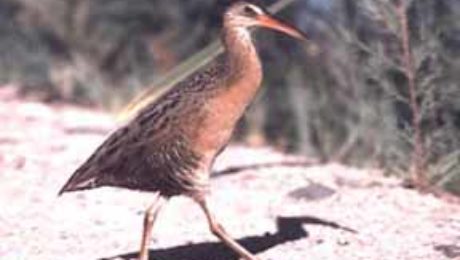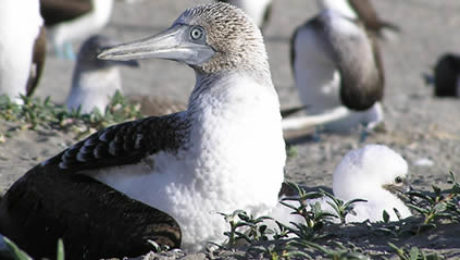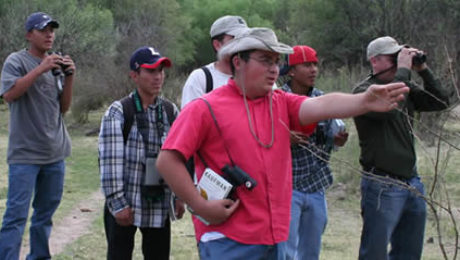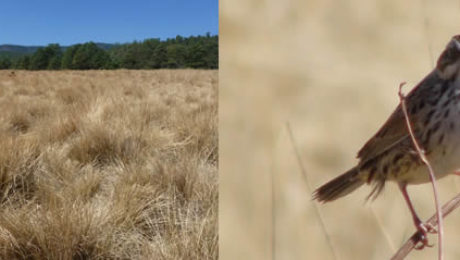Marshbird Survey Training Workshop
Project Description The U.S. Fish and Wildlife Service (USFWS) coordinates an annual region-wide multi-agency marsh bird survey effort throughout the Lower Colorado River valley region (AZ, CA, NV, and Mexico). This survey effort has occurred annually since 1978 and provides the data needed to assess the status of the endangered Yuma Clapper Rail. In 2006,
- Published in Awards Program
Annual distribution, abundance, and reproductive status of Mexican Green Parakeet and other psittacids in the mountainous zone of Chihuahua, Sonora, and Sinaloa, Mexico
Project Description The Mexican Green Parakeet, found in northwestern Mexico, is currently one of the least known subspecies of psittacids. Little is known about its biology, distribution, and population health, or habitat requirements. Mexican Green Parakeet is listed as Endangered on the Mexican Norma Oficial-059 and as a species of Continental Concern by the SJV.
- Published in Awards Program
Monitoring of seabirds in Bahía Santa Maria, Sinaloa: population size, breeding habitat, reproductive success, and diet
Project Description In the Gulf of California, Bahía Santa Maria (BSM) is a wetland of high ecological and economic importance. It is an important congregation site for shorebirds, ducks, and seabirds and is subject to increasing anthropogenic pressure from fishing and adjacent agriculture activities. Although BSM is designated as a priority wetland under a several
- Published in Awards Program
Community-based conservation of the birds of the Oasis de la Sierra del Mechudo, Baja California Sur
Project Description In the southeast of the Baja California Peninsula are a series of oases, including El Salto, Primer and Segundo Bosque (to the south of the Giganta mountain range). These habitats are located in the arid region of the Peninsula. We observed a high bird species richness that includes resident and migratory species, including
- Published in Awards Program
A first assessment of the Red Knot population wintering in Golfo de Santa Clara, Alto Golfo de California and Colorado River Delta Biosphere Reserve, Mexico
Project Description This project involves the implementation of an annual monitoring program for Red Knot (Calidris canutus roselaari) in the Alto Golfo de California and Colorado River Delta Biosphere Reserve, Mexico. This wintering population could be independent from that of Guerrero Negro, Baja California, and provide clues on the migratory routes of up to 68%
- Published in Awards Program
Waterbird monitoring in estuaries of the Hermosillo coast and on the Sonoran midriff islands
Project Description This project will build upon the Prescott College Kino Bay Center for Cultural and Ecological Studies’ 10-year Waterbird Monitoring Program (WMP) in the Sonoran Midriff Island region of the Gulf of California. The region’s islands and estuaries provide critical nesting, roosting, and feeding habitat for many SJV priority species. The WMP currently focuses
- Published in Awards Program
Sierra Madre Sparrow conservation study
Project Description We will conduct an ecological study of the Sierra Madre Sparrow to fill gaps in basic information, complete an inventory of habitats (map and database) with vegetation attributes per site. Based on the results of our investigation, we will prepare a report on the species’ status, including abundance, measurement of productivity and population
- Published in Awards Program
Restoration of an important breeding site for threatened shorebirds in a coastal wetland of Sinaloa
Project Description Bahía de Ceuta is an important coastal wetland in northwestern Mexico. Located in the southeastern part of the bay is an abandoned salt mine (~150 ha), which is used as a breeding site for at least five species of shorebirds, including Snowy Plover (100 pairs) and Least Tern (300 pairs), both of which
- Published in Awards Program


 English
English  Español
Español 




